
The Battle of Midway was a major naval battle in the Pacific Theater of World War II that took place on 4–7 June 1942, six months after Japan's attack on Pearl Harbor and one month after the Battle of the Coral Sea. The Japanese Combined Fleet under the command of Isoroku Yamamoto suffered a decisive defeat by the U.S. Pacific Fleet near Midway Atoll, about 1,300 mi northwest of Oahu. Yamamoto had intended to capture Midway and lure out and destroy the Pacific Fleet, especially the U.S. aircraft carriers which had escaped damage at Pearl Harbor.

The Battle of the Coral Sea, from 4 to 8 May 1942, was a major naval battle between the Imperial Japanese Navy (IJN) and naval and air forces of the United States and Australia. Taking place in the Pacific Theatre of World War II, the battle was the first naval action in which the opposing fleets neither sighted nor fired upon one another, attacking over the horizon from aircraft carriers instead. It was also the first military battle between two aircraft carriers.

Sōryū was an aircraft carrier built for the Imperial Japanese Navy (IJN) during the mid-1930s. A sister ship, Hiryū, was intended to follow Sōryū, but Hiryū's design was heavily modified and she is often considered to be a separate class. Sōryū's aircraft were employed in operations during the Second Sino-Japanese War in the late 1930s and supported the Japanese invasion of French Indochina in mid-1940. During the first months of the Pacific War, she took part in the attack on Pearl Harbor, the Battle of Wake Island, and supported the conquest of the Dutch East Indies. In February 1942, her aircraft bombed Darwin, Australia, and she continued on to assist in the Dutch East Indies campaign. In April, Sōryū's aircraft helped sink two British heavy cruisers and several merchant ships during the Indian Ocean raid.

Zuikaku was the second and last Shōkaku-class aircraft carrier built for the Imperial Japanese Navy (IJN) shortly before the beginning of the Pacific War. Zuikaku was one of the most modern Japanese aircraft carriers when commissioned, and saw successful action throughout numerous battles during the Pacific War.

A torpedo bomber is a military aircraft designed primarily to attack ships with aerial torpedoes. Torpedo bombers came into existence just before the First World War almost as soon as aircraft were built that were capable of carrying the weight of a torpedo, and remained an important aircraft type until they were rendered obsolete by anti-ship missiles. They were an important element in many famous Second World War battles, notably the British attack at Taranto, the sinking of the German battleship Bismarck, the sinking of the British battleship HMS Prince Of Wales and the British battlecruiser HMS Repulse and the Japanese attack on Pearl Harbor.
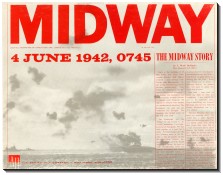
Midway is a board wargame published by Avalon Hill in 1964 that simulates the Battle of Midway during World War II.

USS Enterprise (CV-6) was a Yorktown-class carrier built for the United States Navy during the 1930s. She was the seventh U.S. Navy vessel of that name. Colloquially called "The Big E", she was the sixth aircraft carrier of the United States Navy. Launched in 1936, she was the only Yorktown-class and one of only three American fleet carriers commissioned before World War II to survive the war.
This is a list of aviation-related events from 1942:

The Indian Ocean raid, also known as Operation C or Battle of Ceylon in Japanese, was a naval sortie carried out by the Imperial Japanese Navy (IJN) from 31 March to 10 April 1942. Japanese aircraft carriers under Admiral Chūichi Nagumo struck Allied shipping and naval bases around British Ceylon, but failed to locate and destroy the bulk of the British Eastern Fleet. The Eastern Fleet, commanded by Admiral Sir James Somerville, was forewarned by intelligence and sailed from its bases prior to the raid; its attempt to attack the Japanese was frustrated by poor tactical intelligence.

War at Sea is a strategic board wargame depicting the naval war in the Atlantic during World War II, published by Jedko Games in 1975, and subsequently republished by Avalon Hill in 1976 and more recently by L2 Design Group in 2007.

Guadalcanal is a board wargame published by Avalon Hill as part of the Smithsonian American History Series. The game simulates World War II naval battles near the Solomon Islands and is primarily designed for two players. It uses the same game design as the Smithsonian edition of Midway.

Victory in the Pacific (VITP) is a board wargame published by the Avalon Hill game company in 1977 that simulates the War in the Pacific during World War II.

For decades, Task Force 77 was the aircraft carrier battle/strike force of the United States Seventh Fleet in the United States Navy (USN), a designation lasting from the final year of the Second World War until the disestablishment of the task force in 2000.
Empire of The Rising Sun (RSN–1995) is a board wargame published originally by Avalon Hill, designed by Bruce Harper with much input by Dave Casper into the naval warfare rules. This is the Pacific War companion game to Advanced Third Reich (A3R), using similar rules, and containing once again a copy of Ultra magazine with a synopsis of the game. A previous version, occasionally discussed in the pages of The General magazine, had been in development the late 1970s, but was never published.
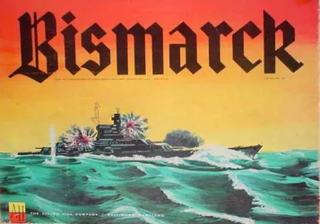
Bismarck is a board wargame published by Avalon Hill in 1962 that simulates the hunt for the Bismarck.
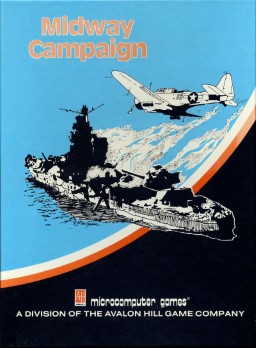
Midway Campaign is a computer wargame released by Avalon Hill in 1980. It is a text-based game written in BASIC.
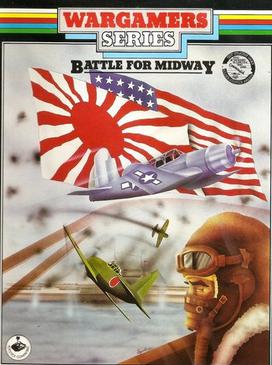
Battle for Midway is a turn-based strategy video game developed and published by Personal Software Services. It was first released in the United Kingdom and France for the MSX in 1984, and was re-released for the Amstrad CPC, Commodore 64 and ZX Spectrum in 1985. It is the first instalment of the Wargamers series. The game is set during the Battle of Midway in the Pacific Ocean theatre of World War II and revolves around the United States Navy attacking a large Imperial Japanese fleet stationed at Midway Atoll, in retaliation for the attack on Pearl Harbor.

Indian Ocean Adventure: The Japanese Raids on Ceylon is a board wargame published by Game Designers' Workshop (GDW) in 1978 that simulates the World War II naval raid on Ceylon by a Japanese aircraft carrier fleet.
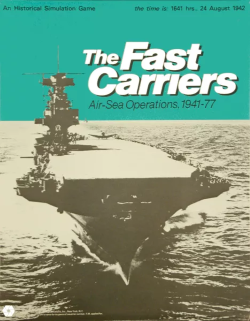
The Fast Carriers, subtitled "Air-Sea Operations, 1941–77" is a board wargame published by Simulations Publications Inc. (SPI) in 1975 that simulates naval combat involving aircraft carriers from 1941 to the mid-1970s.

Coral Sea, subtitled "Turning the Japanese Advance, 1942", is a board wargame published by Game Designers' Workshop (GDW) in 1974 that simulates the Battle of the Coral Sea in the Pacific Theater of World War II.


















